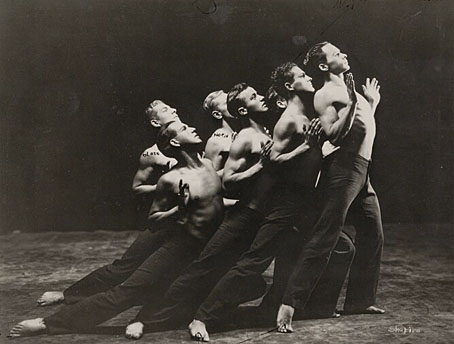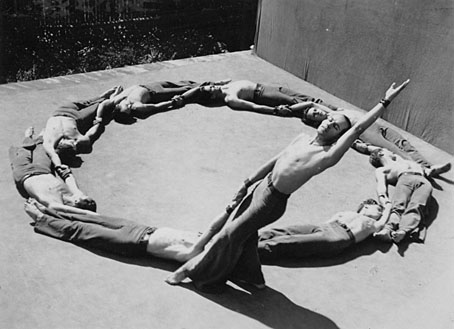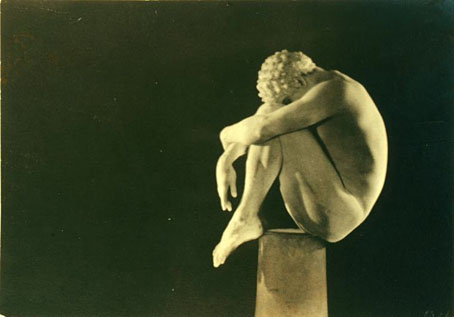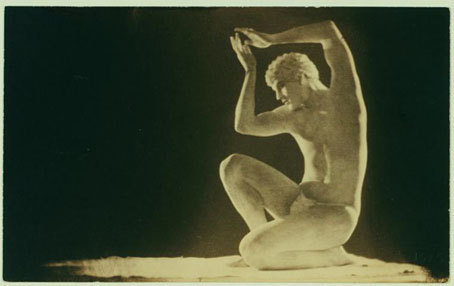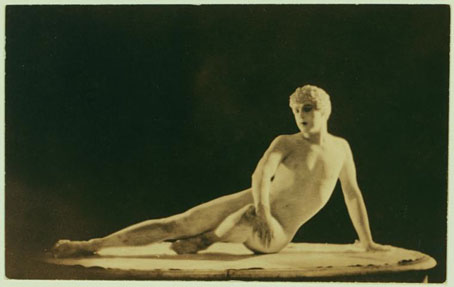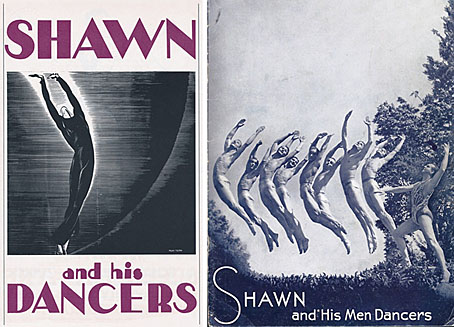
Poster on the left designed by Major Felten (1931).
In 1914, [Ruth] St Denis married a twenty-two-year-old gay man, the ambitious and sexually charismatic Ted Shawn (1891–1972), who became her dance partner. Shawn appeared at any opportunity in the scantiest of costumes. In 1915, they founded the Denishawn Dance School in Los Angeles, which became a significant artistic center from which many creative dancers emerged, most notably Martha Graham.
Burton Mumaw (b. 1912), a student of Shawn’s, first danced with the Denishawn company in 1931. Mumaw and Shawn soon became lovers and life companions. Shawn separated from St. Denis in 1933 and formed his Company of Male Dancers. Mumaw and Shawn were the leading soloists of the new company. (more)
I can’t vouch for the accuracy of GLBTQ’s claims about Ted Shawn’s sexuality before he married Ruth St Denis, but it’s impossible to see his all-male dance troupe as anything other than homoerotic, especially when they had a tendency to perform in the nude (see below). Shawn’s intention was to move the associations of male dance away from the perceived effeminacies of ballet towards something more assertive and muscular. Shawn and Ruth St Denis had gone to great lengths to import into American dance various exotic elements from Asia and the ancient world, a process they called “Oriental dance”. This was no doubt the kind of Orientalism which is repudiated today for its appropriations but in the 1910s and 20s these developments were significant moves away from the staid traditions of 19th-century ballet. Shawn continued this evolution with a robust choreography based on ethnic war dances and other masculine fare. This kind of all-male dance is now very common—and remains homoerotic, of course, often intentionally so—but in the 1930s the idea was a radical one.
YouTube has a short film of Shawn and company in action in 1935. At the Internet Archive there are the two volumes of Ted Shawn’s Ruth St. Denis, Pioneer & Prophet: Being a History of Her Cycle of Oriental Dances (1920).
